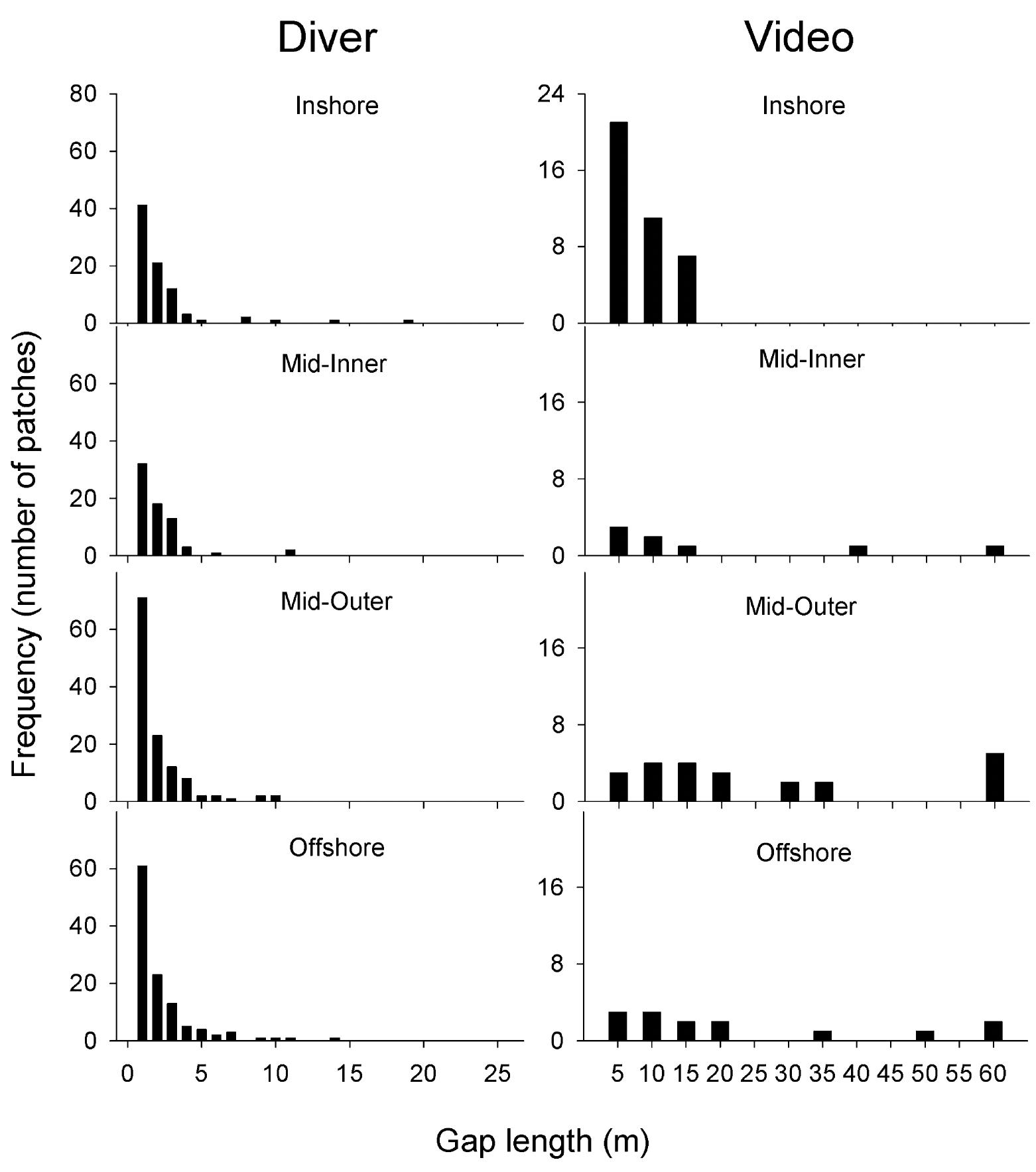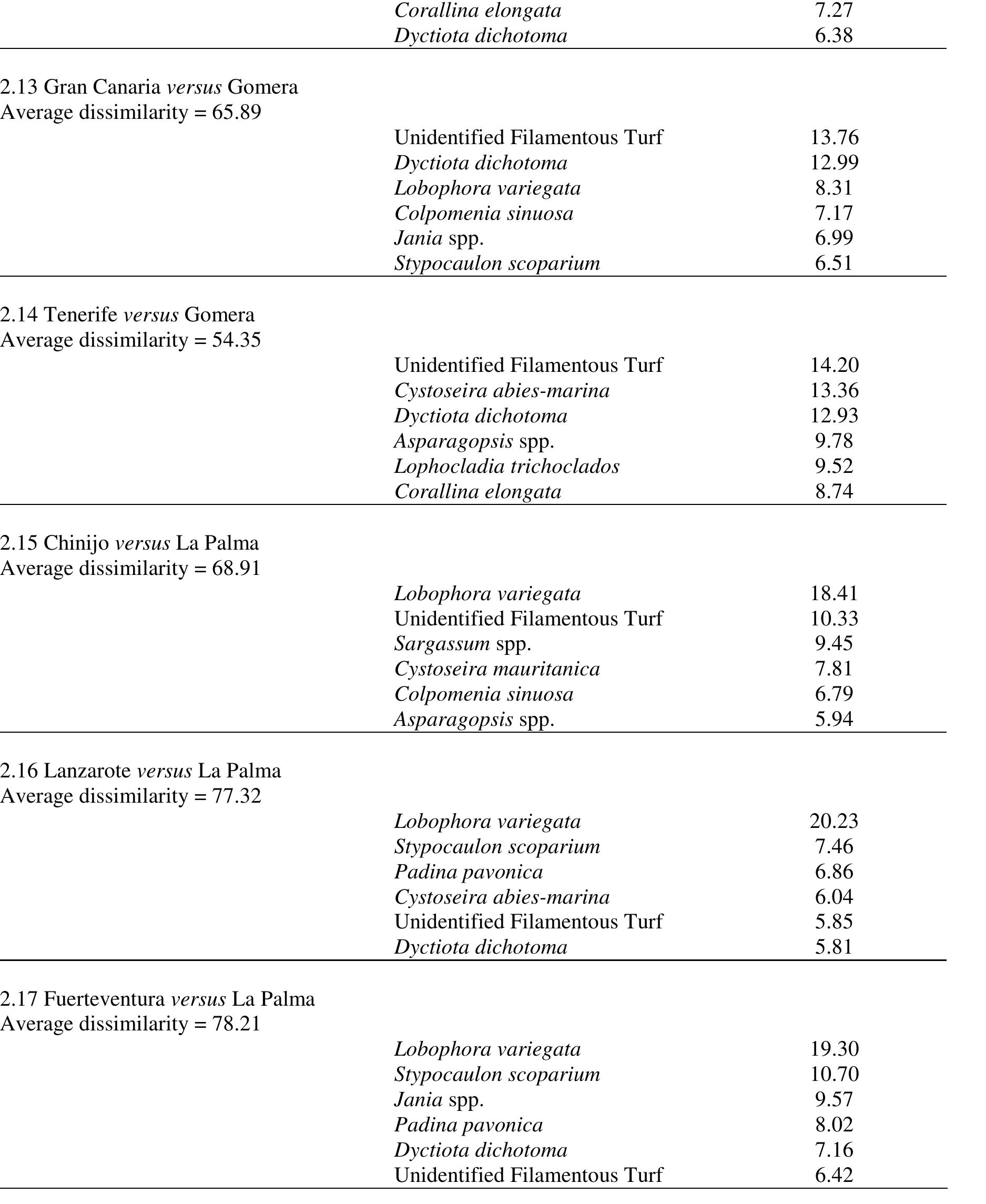The relationships between fish assemblages, their associated habitat, and degree of protection from fishing were evaluated over a broad spatial scale throughout the main Hawaiian islands. Most fish assemblage characteristics showed... more
We review how intertidal biodiversity is responding to globally driven climate change, focusing on long-term data from rocky shores in the British Isles. Physical evidence of warming around the British Isles is presented and, whilst there... more
Patterns of community structure in the marine environment are strongly influenced by population relationships to biotic and physical gradients. The aim of this work is to explore the relationships of tropical rocky reef fish assemblages... more
Shallow eutrophic lakes tend to be either in a turbid state dominated by phytoplankton or in a clearwater state dominated by submerged macrovegetation. Recent studies suggest that the low water turbidity in the clear-water state is... more
The effects of single-season tropospheric ozone (0,) exposures on growth, leaf abscission, and biomass of trembling aspen (Popu1u.s tremuloides Michx.) rooted cuttings and seedlings were studied. Plants were grown in the Upper Peninsula... more
Effects of sea temperature regime, substratum type and degree of wave exposure on the composition of rocky intertidal communities in the Cape of Good Hope were examined using cluster analyses of data for biomass of 310 species on 12 rocky... more
A paradigm is a set of mutually supportive hypotheses that provides a frame of reference within a field. In 1962, Kuhn proposed that paradigms form within the dual contexts of empirical evidence and intellectual history. Facts potentially... more
1 We investigated morphological responses of the submerged macrophyte Myriophyllum spicatum L. to water depth and wave exposure when grown in the same substrate at two sites in two eutrophic lakes. Periphyton production was 4 -8 times... more
The spatial arrangement of seagrass beds varies from scales of centimeters to meters (rhizomes, shoot groups), meters to tens of meters (patches), to tens of meters to kilometers (seagrass landscapes). In this study we examine the role of... more
A simple food chain model of community structure was used to evaluate the roles of bottom-up and top-down factors in a rocky intertidal community. Predictions of the model were modified to incorporate known variation in the strength of... more
The distribution of Mytilus edulis Linnaeus, M. galloprovincialis Lamarck, and their hybrids was examined in mussel populations in southwest England in 1996 and. This is a region where both parental taxa and populations containing large... more
The North Sea Benthos Project 2000 was initiated as a follow-up to the 1986 ICES North Sea Benthos Survey with the major aim to identify changes in the macrofauna species distribution and community structure in the North Sea and their... more
Historical oil spills have shown that environmental damage on the seashore can be measured by acute mortality of single species and destabilisation of the communities. The biota, however, has the potential to recover over some period of... more
The rocky intertidal mussel Mytilus californianus is exposed to potentially damaging thermal conditions during low tide. However, because the temperatures of ectothermic organisms are driven by multiple climatic factors, we do not fully... more
In this study the potential of predicting critical erosion shear stresses from microphytobenthos chlorophyll a surface concentrations in the upper mm of the sediment surface was investigated. The results should provide a better basis for... more
Marine reserves provide a large-scale experimental framework to investigate the effects of fishing on food web dynamics and how they vary with environmental context. Because marine reserves promote the recovery of previously fished... more
Patterns of selection on gastropod shell morphology are generally believed to be different on wave-exposed and wave-sheltered shores. The heavy surf on wave-exposed shores is thought to select for small size whereas the high risk of... more
Kautsky, L., 1987. Life-cycles of three populations of Potamogeton pectinatus L. at different degrees of wave exposure in the Ask5 area, northern Baltic proper. Aquat. Bot., 27: 177-186.
Two ecotypes of Nucella lapillus can occur allopatrically or sympatrically, according to different degrees of wave exposure and microhabitats, on rocky shores of NW Spain. We studied differences in shell size and shape in adults and... more
Mosaics of habitat dominated by canopy-forming macroalgae and canopy-free (open-gap) habitat are prominent features of temperate subtidal reefs. However, the persistence and mechanisms underlying the arrangement of these patterns are not... more
1. The effects of physical disturbance in terms of wave exposure, shore slope and substrate mobility on the presence, species richness, cover and depth limits of the low-growing, shallow water macrophyte community (called the low mixed... more
The Point Conception, California, USA region (hereafter PC) is one of the most important biogeographic and oceanographic discontinuities on the US west coast. Here we address how mesoscale oceanographic and environmental variability in... more
a b s t r a c t a r t i c l e i n f o Keywords: Biogeography Global warming Recruitment Settlement Transition zone Wave action
A red algal turf covers mid-shore levels of much of the California Channel Islands. Our expcrimenta at Santa Catalina Island show that carnivores maintain the turf by consumingjuvenile mussels ,W~~tihr.c spp. and associated invertebrates.
A large data set~ collected under the national Danish monitoring program, was used to evaluate the importance of photon flux density (PFD), relative wave exposure (REI), littoral slope, and salinity in regulating eelgrass cover at... more
Geospatial and field data were merged to characterize the invasion of an exotic macrophyte into a large (∼6192 ha), reservoir, the Chippewa Flowage, Wisconsin, USA. Multi-scale analyses provided data for quantitative models of human,... more
In northwest Europe, sheltered rocky shores are dominated by fucoid canopy algae and barnacles are rare, although the latter are extremely abundant on exposed shores. The supply of the intertidal barnacle Semibalanus balanoides (L.) to... more
Chondrus crispus Stackhouse alternates between two isomorphic life history phases that differ in cellwall phycocolloid composition. It has been long hypothesized that the gametophyte, with strong-gelling kappa-type carrageenans, is... more
Wave action is known to inXuence the abundance and distribution of intertidal organisms. Wave action will also determine the duration and suitability of various foraging windows (high-tide and low-tide, day and night) for predation and... more
We studied the role of hydrodynamics in the establishment of seagrass seedlings for two Mediterranean sea grass species, Posidonia oceanica and Cymodocea nodosa, by combining flume and field studies. Flume measurements under both... more
The structure of cryptic reef Wsh assemblages was assessed on sheltered and exposed aspects of coastal breakwaters at two locations in the northwestern Adriatic Sea. There were distinct diVerences between the two levels of exposure, which... more
Distribution of submerged macrophytes was assessed at 15 littoral sites in large, shallow Lake Balaton using the echo sounding technique. Sites represented the conspicuous longitudinal and transverse environmental gradients.... more
Intertidal macroalgae often experience greater risk of dislodgment with increasing size because of underscaling of breaking force of their stipes relative to drag on their thalli. This ratio (breaking force/drag) indicates safety from... more
The in¯uence of wave exposure and of tidal height on mussel (Perna perna Linnaeus) population structure (size, density, biomass and adult/juvenile correlations) was examined at 18 sites along the south coast of South Africa. Sites were... more
Nineteen intermediate exposed sandy beaches, located along the northern coast of Spain, were sampled during the summer 1999. Data from 10 of the beaches, located at the eastern part of this coast, were previously reported to evaluate... more
Elevated rates of sediment run-off, as a result of changes in land-use and climate, are a significant threat to marine coastal communities, with a potential to cause broad-scale, long-term alteration of habitats. Individual sedimentation... more
Morphological variation and vertical distribution of Fucus vesiculosus were quantified at several sites in the Finnish archipelago (Baltic Sea). F. vesiculosus samples were obtained from skerries at geographical distances of 1 km or more... more
Morphological development of Laminaria hyperborea was examined at localities with different degrees of wave exposure. Biomass data were converted to estimates of annual growth of lamina, stipe and hapteron. Allocation of annual growth to... more
The bleaching event of 1998 caused widespread mortality on coral reefs in the Maldives. Nearly 10 years after the coral mass mortality, the state of Maldivian reefs was evaluated paying specific attention to three ecological stages,... more
The mapping of seabed environments is fundamental to successful fisheries management and environmental monitoring, however, there is an emerging need to better characterise habitats based upon appropriate physical parameters. In this... more
During 2005 monthly samples of the solitary ascidian Herdmania momus were collected along the Mediterranean and Red Sea coasts of Israel, in order to investigate possible differences in life history strategies of the two populations. The... more
This paper describes the morphology of near-horizontal basalt and calcarenite shore platforms around Lord Howe Island as well as the lithological and process environment in which they occur. The morphology of platforms around the island... more
The Northwestern Mediterranean Sea is a microtidal system, where barometric pressure and local wave exposure play the paramount role in sea water level variation. Herein, Cystoseira amentacea var. stricta and Cystoseira compressa are... more
























































































































